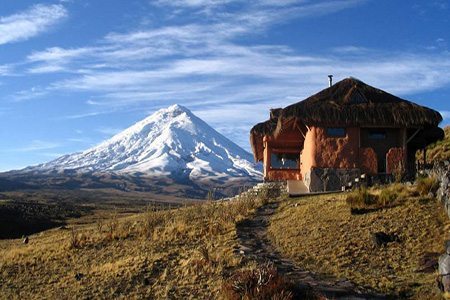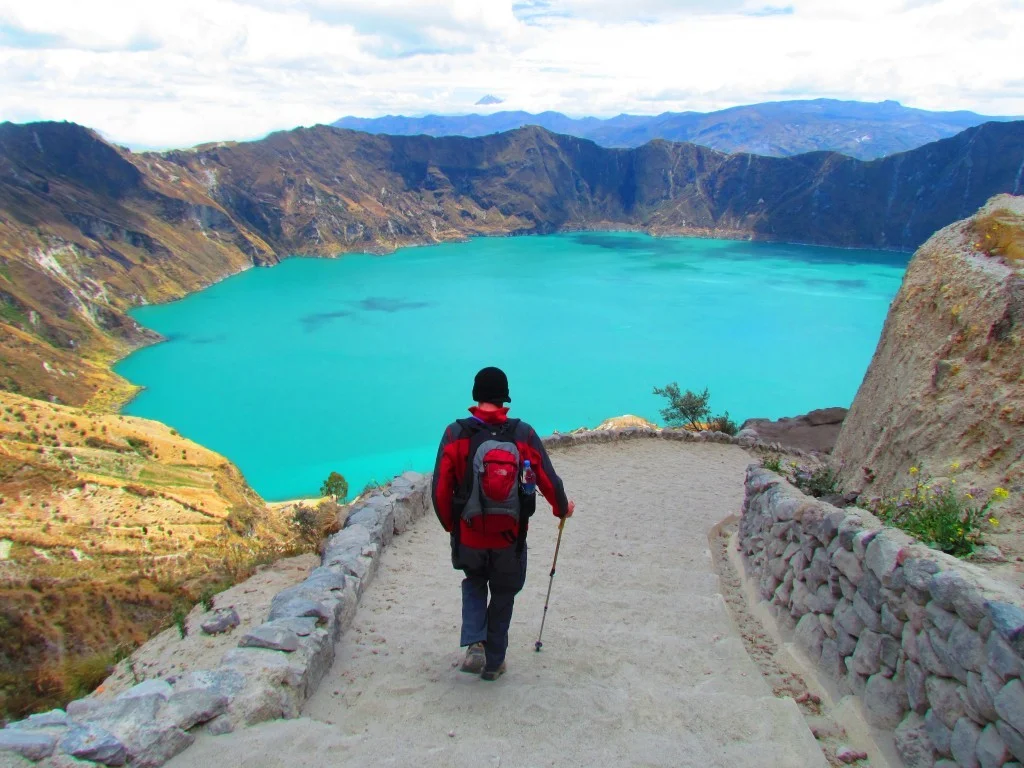Imagine standing amidst a lush greenery, surrounded by the breathtaking beauty of its National Parks in Ecuador. From the towering peaks of the Andes to the tropical rainforests of the Amazon, Ecuador’s national parks offer a diverse range of landscapes and experiences that are sure to captivate any traveler. It’s no wonder that these parks are among the most sought-after destinations for nature enthusiasts and adventure seekers alike.
With over 20% of its land designated as protected areas, Ecuador is a haven for biodiversity. The country’s commitment to conservation is evident in its network of parks, which includes the iconic Galápagos Islands, home to unique species found nowhere else on Earth. Whether you’re keen to explore the volcanic landscapes of Cotopaxi National Park or the cloud forests of El Cajas, there’s something for everyone in this natural paradise.
For those planning a visit, understanding the highlights of Ecuador’s top parks can be overwhelming. That’s why we’ve curated a list of the best 5 national parks to visit in Ecuador. Each park offers its own unique charm and attractions, from the mysterious allure of Sangay National Park with its active volcanoes to the rich cultural history intertwined with the landscapes of Machalilla National Park.
As you plan your adventure, consider making your base at the elegant Hotel Boutique Mansión Alcázar in Cuenca. This historic hotel offers a luxurious retreat after a day of exploration and is perfectly situated for visitors eager to discover the wonders of Ecuador’s national parks. Ready to embark on a journey through Ecuador’s natural wonders? Let’s dive into the details of these must-visit parks.
Yasuni National Park: A Biodiversity Hotspot
Yasuni National Park, nestled in the heart of the Amazon Basin, is a true testament to Ecuador’s commitment to conserving its natural heritage. Recognized as one of the most biodiverse places on Earth, Yasuni is a haven for countless species of flora and fauna. This ecological gem spans over 9,820 square kilometers, offering a unique blend of tropical rainforest and river ecosystems.
Visitors to Yasuni can expect an unparalleled experience, with the opportunity to witness an incredible array of wildlife. The park is home to thousands of plant species, hundreds of bird species, and a myriad of mammals, reptiles, and amphibians. This biodiversity is not just a spectacle; it plays a crucial role in maintaining ecological balance and supporting indigenous communities.
Unique Flora and Fauna
The diversity of life in Yasuni is staggering. The park boasts over 2,200 species of trees and shrubs, making it one of the most densely vegetated areas in the world. Among the notable plant species are the giant ceiba trees and the delicate orchids that add a splash of color to the lush greenery.
When it comes to wildlife, Yasuni does not disappoint. It is home to iconic species such as the jaguar, giant otter, and the endangered white-bellied spider monkey. Bird enthusiasts will be thrilled to spot the harpy eagle and the vibrant toucans. The park’s rivers teem with life, including the elusive pink river dolphin and the intimidating black caiman.
Importance of Conservation Efforts
Conserving Yasuni’s rich biodiversity is of paramount importance. The park faces threats from oil exploration and deforestation, which could have devastating effects on its delicate ecosystems. Conservation initiatives, therefore, focus on sustainable practices and community involvement to protect this natural treasure.
Organizations like the Global Alliance of National Parks emphasize the importance of preserving Yasuni’s biodiversity. Efforts include promoting eco-friendly tourism and supporting indigenous communities who rely on the park’s resources for their livelihoods.
Tips for Visiting Yasuni National Park
Exploring Yasuni requires careful planning to ensure both safety and enjoyment. It is highly recommended to embark on guided tours led by certified naturalists. These experts provide valuable insights into the park’s ecosystems and ensure that visitors can safely navigate the dense jungle terrain.
Visitors should also be prepared for the park’s humid climate and abundant rainfall. Packing essentials such as waterproof clothing, insect repellent, and sturdy footwear will enhance the experience. Additionally, respecting local customs and the natural environment is crucial to preserving Yasuni for future generations.
For those seeking an unforgettable adventure, Yasuni National Park offers a chance to connect with nature in its purest form. Discover more about Ecuador’s national parks and plan your journey with the help of Hotel Boutique Mansión Alcázar, your perfect base for exploring these natural wonders.
Galapagos National Park: A Unique Island Experience
The Galapagos National Park is a living laboratory of evolution, offering visitors a chance to witness nature’s wonders firsthand. Established in 1959, it was Ecuador’s first national park and covers 97% of the Galapagos Islands. This UNESCO World Heritage site is renowned for its unique biodiversity and the role it played in Charles Darwin’s theory of evolution. The park’s isolation has led to the development of species found nowhere else on Earth, making it a must-visit destination for nature enthusiasts.
Visitors to the Galapagos can expect to encounter a variety of wildlife, including the iconic giant tortoises, marine iguanas, and blue-footed boobies. The park’s strict conservation policies ensure that these species are protected, allowing them to thrive in their natural habitat. However, this also means that visitors must adhere to specific guidelines to minimize their impact on the fragile ecosystem.
Historical Context and Scientific Significance
The Galapagos Islands have long been a source of fascination for scientists and explorers. In 1835, Charles Darwin visited the islands aboard the HMS Beagle, observing the diverse species that would later inspire his groundbreaking work on natural selection. The park’s establishment in 1959 marked a significant step in global conservation efforts, recognizing the need to protect these unique ecosystems.
Over the years, the Galapagos has become a hub for scientific research, attracting experts from around the world. Studies conducted here have provided valuable insights into evolutionary biology, ecology, and conservation. The islands continue to serve as a critical reference point for understanding the impacts of climate change and human activity on biodiversity.
Iconic Wildlife of the Galapagos
The Galapagos National Park is home to an array of species that have adapted to the islands’ unique conditions. Among the most famous are the Galapagos giant tortoises, which can live for over a century. These gentle giants are a symbol of the islands and play a crucial role in maintaining the ecological balance.
Marine iguanas, the only sea-going lizards in the world, are another highlight. Their ability to forage in the ocean for algae is a remarkable adaptation. Birdwatchers will be delighted by the presence of species such as the flightless cormorant and the waved albatross. The islands’ isolation has led to the development of these and other species, making the Galapagos a living showcase of evolution.
Visitor Guidelines and Conservation Efforts
To preserve the Galapagos’ unique environment, strict regulations are in place for visitors. Tourists must be accompanied by certified guides, and access to certain areas is limited to prevent disturbance to wildlife. Visitors are also prohibited from touching or feeding animals and must adhere to designated paths to minimize their impact.
Conservation efforts are a collaborative endeavor involving local authorities, international organizations, and researchers. Initiatives focus on habitat restoration, invasive species control, and sustainable tourism practices. By following these guidelines, visitors can enjoy the Galapagos’ natural beauty while contributing to its preservation for future generations.
For those planning a visit, the Galapagos offers an unparalleled opportunity to connect with nature. Consider making your base at the elegant Hotel Boutique Mansión Alcázar, providing a luxurious retreat after exploring the wonders of Ecuador’s national parks.
Cotopaxi National Park: Adventure Awaits
Nestled in the heart of Ecuador, Cotopaxi National Park is a paradise for adventure enthusiasts. Dominated by the majestic Cotopaxi Volcano, one of the highest active volcanoes in the world, this park offers a unique blend of natural beauty and thrilling activities. Whether you’re an avid hiker or a nature lover, Cotopaxi promises an unforgettable experience.
The park’s diverse landscape, featuring lush forests, rolling plains, and rugged mountains, provides the perfect backdrop for a variety of outdoor adventures. From hiking and horseback riding to mountain biking, there’s something for everyone. As you explore, you’ll be surrounded by breathtaking vistas, pristine lakes, and a rich array of wildlife, making every moment in Cotopaxi truly magical.
Exploring the Geography of Cotopaxi
Cotopaxi National Park spans approximately 33,393 hectares, encompassing a range of altitudes and ecosystems. At its heart lies the iconic Cotopaxi Volcano, standing at 5,897 meters. The park’s varied terrain includes paramo grasslands, dense forests, and glacial features, offering a unique opportunity to explore diverse natural environments.
The park’s geography is not only captivating but also vital for the region’s biodiversity. The varied altitudes create distinct habitats that support a wide range of flora and fauna. Visitors may spot Andean condors soaring above or encounter herds of wild horses grazing in the plains. This rich biodiversity makes Cotopaxi a must-visit for nature enthusiasts.
Popular Activities and Trails
For those seeking adventure, Cotopaxi offers numerous hiking trails and climbing routes. The Rumiñahui Volcano trail is a favorite among hikers, providing stunning views of the surrounding landscape. For a more challenging trek, consider the ascent to the Cotopaxi refuge, which offers a closer view of the volcano’s snow-capped peak.
Mountain biking is another popular activity, with trails ranging from beginner to advanced levels. The park’s varied terrain ensures an exciting ride, with opportunities to explore both forested areas and open plains. Horseback riding is also available, offering a unique way to experience the park’s natural beauty.
Safety Tips for High-Altitude Adventures
While Cotopaxi National Park is a haven for adventure seekers, it’s essential to prioritize safety, especially when engaging in high-altitude activities. The park’s elevation can pose challenges, so acclimatization is crucial. Spend a day or two at a lower altitude before attempting strenuous activities.
Always check weather conditions before setting out, as the weather can change rapidly in the mountains. It’s advisable to hire a local guide who is familiar with the terrain and can provide valuable insights. Ensure you have the necessary gear, including warm clothing, sturdy footwear, and plenty of water to stay hydrated.
For more information on planning your visit to Cotopaxi National Park, consider exploring the resources available at Hotel Boutique Mansión Alcázar, your ideal base for discovering Ecuador’s natural wonders.
Embark on Your Ecuadorian Adventure
Having journeyed through the breathtaking National Parks in Ecuador, it’s clear that this country is a treasure trove of natural wonders. From the dense biodiversity of Yasuni National Park to the evolutionary marvel of the Galapagos, each park offers a unique window into the world’s ecological diversity. These parks are not just destinations; they are experiences that connect you with the planet’s most extraordinary landscapes and wildlife.
Whether you’re drawn to the towering peaks of Cotopaxi or the serene waters of El Cajas, Ecuador’s national parks promise unforgettable adventures. Each location, with its distinctive charm and ecological significance, invites you to explore its depths and witness nature’s splendor firsthand. As you traverse these parks, you’ll find yourself immersed in a world where conservation and beauty go hand in hand, preserving these incredible ecosystems for generations to come.
- Yasuni National Park: Spot jaguars and pink river dolphins in this Amazonian paradise.
- Galapagos National Park: Walk among giant tortoises and marine iguanas in a living laboratory of evolution.
- Cotopaxi National Park: Challenge yourself with hikes around one of the world’s highest active volcanoes.
- El Cajas National Park: Discover misty landscapes and rare hummingbirds.
- Machalilla National Park: Explore dry forests and the mysterious Isla de la Plata.
We encourage you not only to explore these magnificent parks but also to share your experiences and inspire others. For a comfortable and luxurious stay, consider making Hotel Boutique Mansión Alcázar your base. Nestled in the heart of Cuenca, this historic hotel offers a perfect blend of elegance and convenience, ensuring your Ecuadorian adventure is as comfortable as it is thrilling.
Ready to embark on your journey? Dive deeper into the wonders of Ecuador’s national parks and begin planning your trip today. Share your stories and adventures with us, and connect with fellow travelers who share your passion for nature and exploration. Remember, the adventure of a lifetime awaits you in Ecuador!




